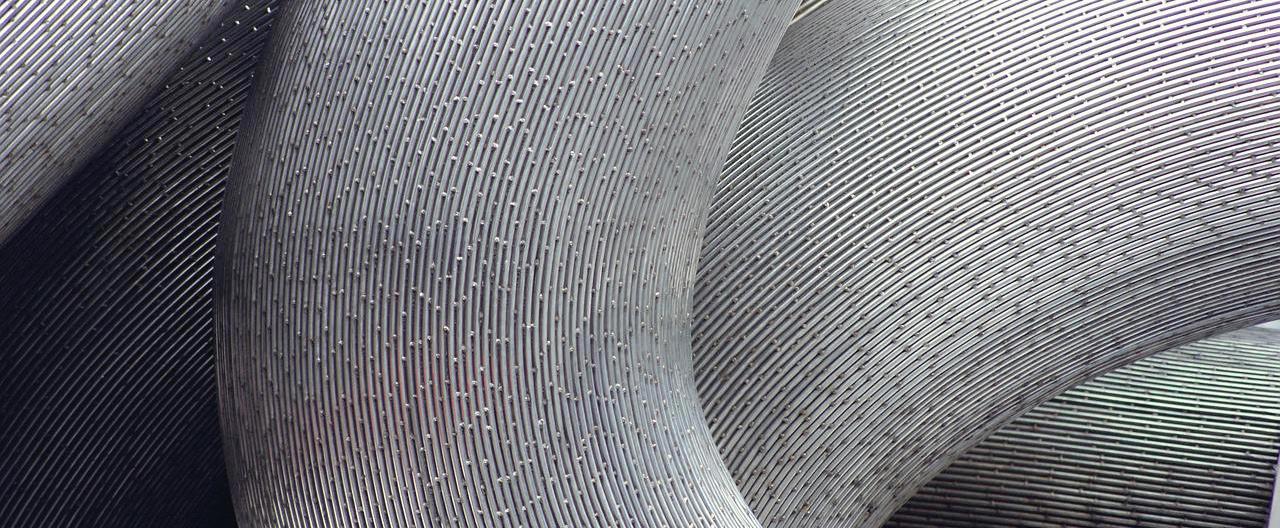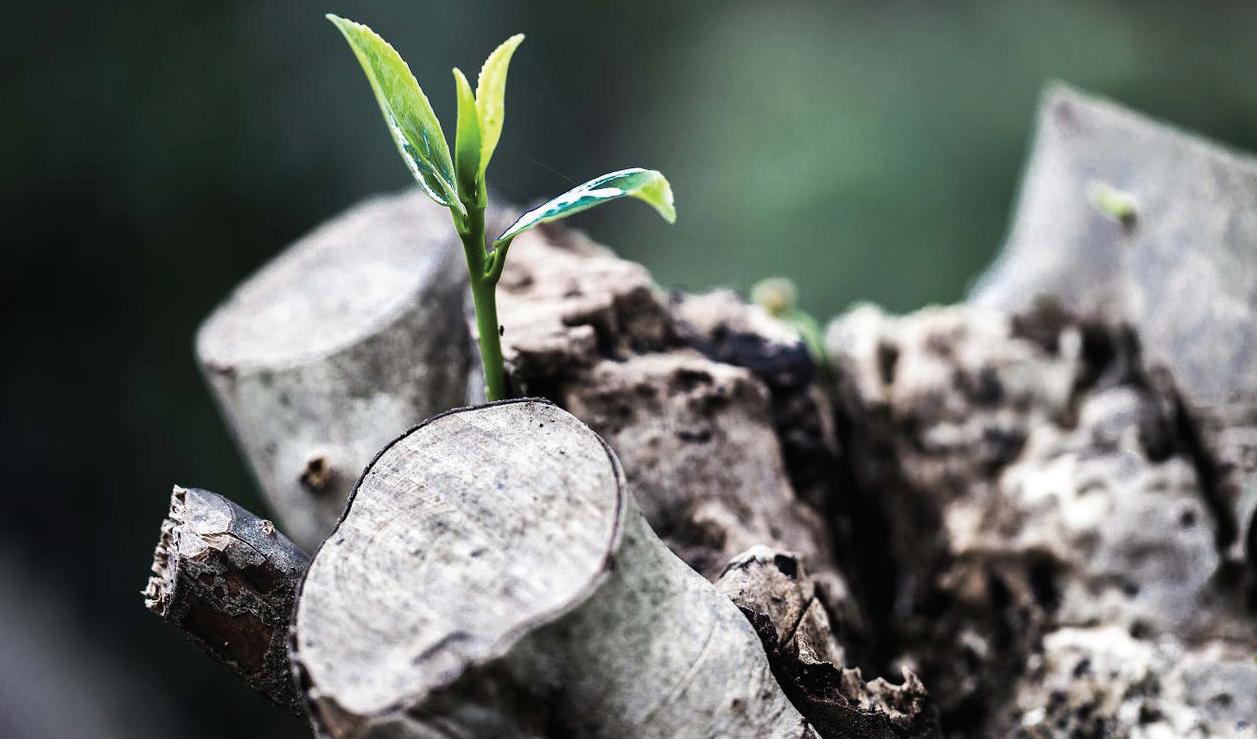
8 minute read
Decarbonizing steel in Europe
EUROPEAN PERSPECTIVE
Decarbonizing steel in Europe
The European steel industry is the most advanced of its kind in the world. For a long time, energy price levels in Europe have been significantly higher compared to other regions in the world. This has forced the European steel industry to optimize its processes, permanently improve its efficiency, and invest in innovative production technologies to achieve a significant reduction in its overall production costs and enhance its competitiveness in international steel markets. By Roman Stiftner*
ALMOST 70 years ago, Austrian company voestalpine developed a completely new technology, the Linz-Donawitz process (LD process), and brought the first steel plant, based on this new technology, into operation. The breakthrough technology enabled significantly more steel production of better quality in a shorter time and in a much more cost-effective way. The major advantage of the LD process was a sustainable reduction in investment and operating costs of almost 50% compared to an open-hearth furnace, which was the best available technology up to this time. The LD process was one of the century’s most significant industrial inventions that instantaneously revolutionized the global steelmaking industry, and almost no other invention has had such an impact on global economic growth. More than two-thirds of the world’s steel today is produced using the LD process.
*Managing director of the Austrian Mining and Steel Association
EUROPEAN PERSPECTIVE


As it is, Europe leads the way in environmental and climate performance. CO2 emissions and energy use in European steel production have been halved since 1960, and the sector has the ambition to further achieve cuts of between 80-95% by 2050, compared to 1990 levels.
This transition will require significant investment in new technological development and deployment, in energy infrastructure, consumption, and type, and will require access to high-quality materials, such as iron ore and scrap.
The European steel industry has established a clear set of pathway scenarios that will deliver this essential change for the sector, ensuring that Europe will remain on track to fulfilling its Paris Climate Accord requirements, while also making European steel fit for a clean, low-carbon future. This change is not an instantaneous shift, it is an iterative process that will require adjustments and a managed transition between different phases.
There are two main technological pathways for greenhouse gas reductions in the steel sector. These are smart carbon usage (SCU) and carbon direct avoidance (CDA).
Smart carbon usage (SCU) includes: � Integration, which looks at modifications of existing ironmaking/ steelmaking processes based on fossil fuels that would help reduce the use of carbon within and thus the CO2 emissions of a stateof-the-art EU plant. � Carbon valorization or carbon capture and usage, which includes all the options for using the hydrogen, CO, and CO2 in steel plant gases or fumes as raw materials for the production of, or integration into, valuable products.
Carbon direct avoidance (CDA) includes: � Hydrogen-based metallurgy, which uses hydrogen to replace carbon as the main reduction agent for the iron ore reduction stage. This hydrogen could be produced using renewable energy. � Electricity-based metallurgy, which uses electricity instead of carbon as a reduction agent for the iron ore reduction, with a greater focus on renewable energy.
Various conditions need to be in place to make this transformation happen. In particular, all the necessary ingredients for steelmaking need to be available in both quality and quantity. These include suitable raw materials, such as iron ore and scrap. It also means having access to sufficient low-CO2 energy sources, such as electricity and hydrogen, which must be available at commercially viable rates. The energy infrastructure that goes with it is also indispensable, as even cutting-edge, technologically advanced steelmaking facilities would be stranded without access to clean energy. During the transition, carbon capture and storage (CCS) technology may also be needed in order to support progress along the potential CO2 reduction pathway.
Finally – both during the transition and once the move to the low or carbon-neutral future of the sector has been successfully completed – there must be a regulatory framework that ensures that the EU steel industry remains competitive compared to its global competitors. Most global competitors do not face anything close to the environmental standards or climate constraints of EU players – and as such, do not bear the costs. A suitable regulatory framework would serve to address this fatal and conceived handicap, both now and in the future.
The European steel industry’s energy requirements will rise significantly, and the key to a successful transformation will be access to reliable, affordable and clean energy. The reduction of greenhouse gases of 80-95% is only possible with CO2-free electricity and hydrogen available. However, an essential piece of the puzzle is the additional costs that these sources will entail. The projected investment needs are very high, and both the capital and operating costs of using them will lead to significant increases in production outlays.
The total annual costs of steel production in 2050, including both capital and operating expenditure are estimated to be between €80-120 billion. However, the individual cost impact depends on the production route and is significantly higher for the primary steel production routes compared to the cost impact for the overall steel industry.
The average steel production costs of all primary steelmaking routes could increase by 35 -100% between 2015 to 2050 compared to the production costs of the retrofitted blast furnace/blast oxygen furnace route (BF/BOF). These figures account for the
EUROPEAN PERSPECTIVE
expectation that the price for electricity and hydrogen production will fall between now and 2050 compared to current prices.
The quantities of energy the European steel sector is likely to need will also rise sharply. The sector will need, annually, about 400 TWh of CO2-free electricity from the grid by 2050. This 400 TWh corresponds to more than seven times the steel industry’s current electricity purchase from the grid. Of this, around 230 TWh would be used for the production of about 5.5 Mt of hydrogen.
Carbon capture and storage (CCS) may play an important role, but may not be available throughout the EU. In some EU member states, there are significant hurdles or even prohibitions on the deployment of CCS. For the ‘current projects’ scenario, about 21 Mt/yr would have been captured, transported and stored. Hence, without CCS only a 67% CO2 reduction would be possible, as opposed to the 74% cut set out in the ‘current projects’ pathway. Some ‘alternative pathways’ may require more CO2-free electricity and hydrogen and a CO2 storage capacity of up to 63 Mt/yr.
Austrian steel producer voestalpine plans to gradually shift from the coal-based blast furnace route to steel production using green electricity. Here, liquid pig iron and sponge iron (HBI) join scrap as the most important pre-materials for tomorrow’s carbonneutral production of high-quality steel. The significant innovation in this production technology is the mixture of raw materials, with its increased proportion of HBI.
Direct reduction is an important bridging technology for decarbonizing steel production. It reduces iron ore to iron with natural gas, rather than coal and coke, resulting in fewer CO2 emissions. The direct reduction process is used to produce HBI, a sophisticated and environmentally friendly pre-material used in steel production. The hybrid technology would allow the CO2 emitted during steel production at Linz and Donawitz to be significantly reduced, by around 30%. This represents an annual saving of 3 to 4 Mt of CO2. The hybrid concept is the basis for achieving the hydrogen-based transformation by 2050.
The EU-funded “H2FUTURE” project is researching whether green hydrogen produced on an industrial scale can replace fossil fuels in steel production over the long term. To this end, what is currently the largest pilot facility for the production of hydrogen in the steel industry has been built at the voestalpine site in Linz. The are multiple project partners like the Austrian electricity supplier VERBUND, Siemens, Austrian Power Grid, K1-MET, and many more. The electrolyzer has a capacity of over 6 MW and is regarded as the most effective and advanced facility of its type. It will be used to test whether the technology deployed to produce green hydrogen is suitable for use on an industrial scale.
A testing facility is currently being established at the Donawitz site in Styria as part of the SuSteel (Sustainable Steelmaking) project. Here, research will be undertaken into the carbon-neutral production of crude steel in a single process step using a novel hydrogen plasma technology. In the future, the facility will operate a type of electric arc furnace to produce steel directly, avoiding the crude steel stage by using hydrogen plasma to reduce ores. The advantage is that climate-neutral water vapour is the only end product, allowing CO2 emissions to be avoided completely. The project involves voestalpine Stahl GmbH, voestalpine Stahl Donawitz GmbH, and the Montanuniversität Leoben.
The transformation of the steel sector is being stalled by several key barriers that must be addressed with absolute priority. The use of the existing financial support options, such as Horizon Europe, partnerships, and the ETS Innovation Fund should be prioritized to the greatest possible extent. This would fasttrack innovation in the sector. Subsequently, innovation de-risking mechanisms and funding for cross-sectoral decarbonization should be used to complement the existing mechanisms and address the lack of innovation incentives and capital of sufficient size. Additionally, having a clear regulatory framework and a vision for the successful implementation of key emission reduction technologies is of utmost importance.
To roll out emission reduction technologies, access to sufficient low-interest investment capital is also needed. Here, the use of support mechanisms, for example in the form of carbon contracts or other de-risking mechanisms, is advisable.
The competitiveness of a low-CO2 steel sector must be sustained during both the innovation and implementation/roll-out stages. The principal threat is that of low-cost foreign competition, which might not be moving – or not moving as fast – towards low-carbon operations as European producers. To minimize the adverse effects of global competition on EU decarbonization efforts, adequate supportive policies should be developed. �









